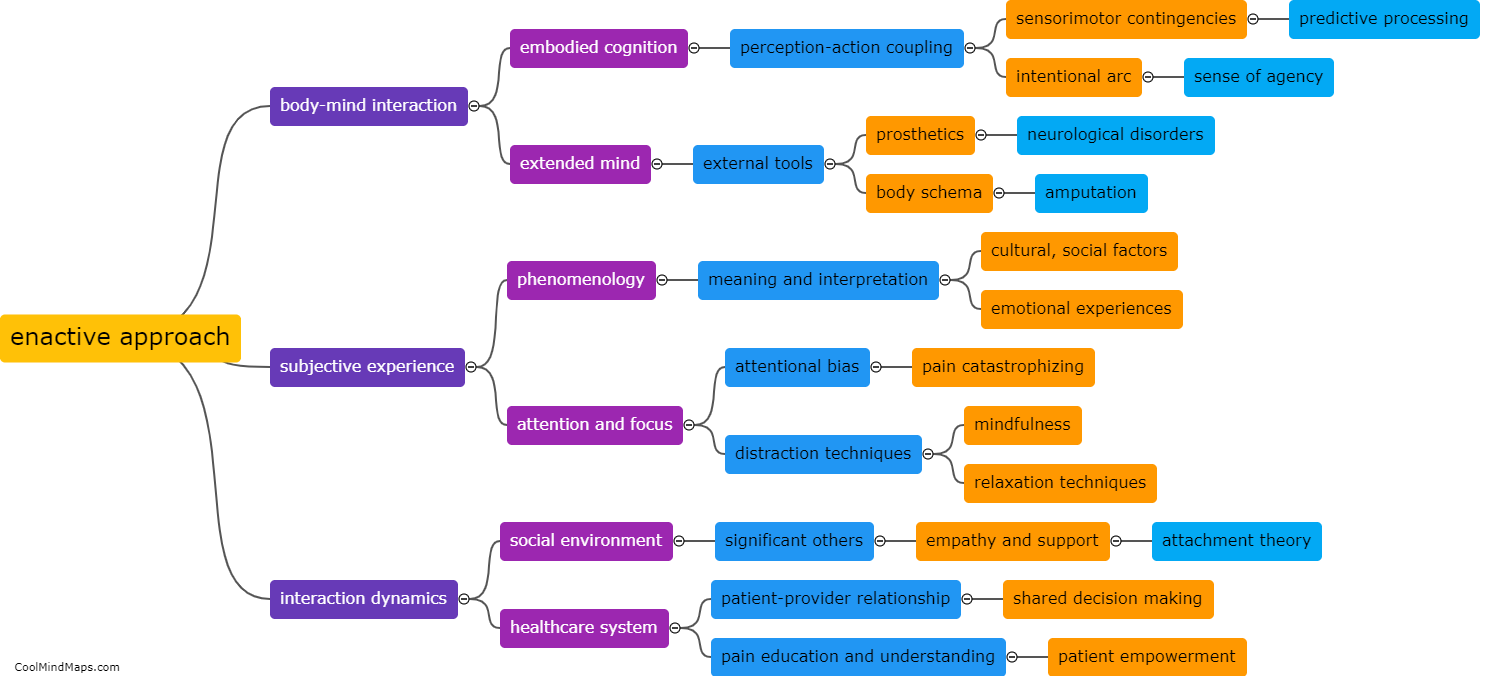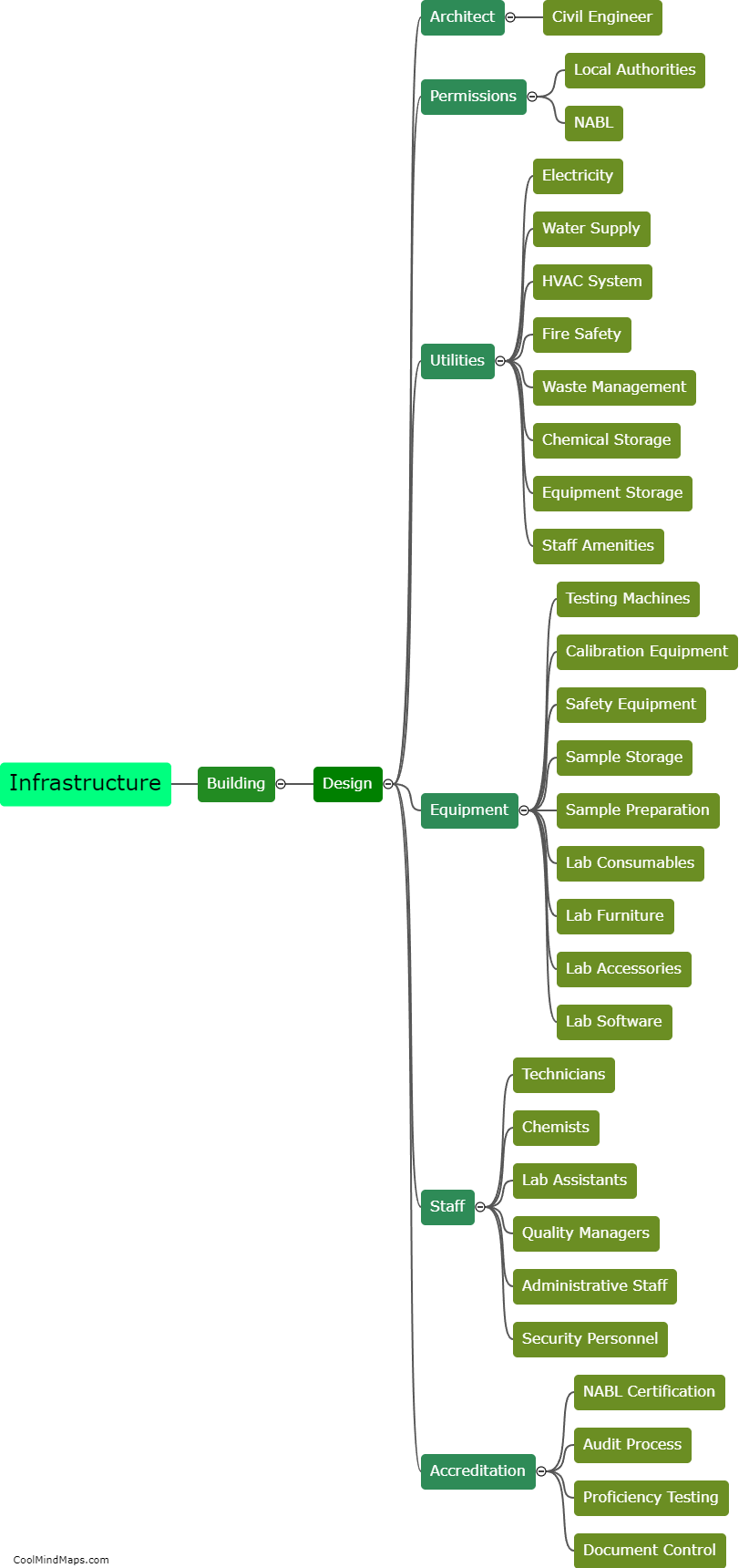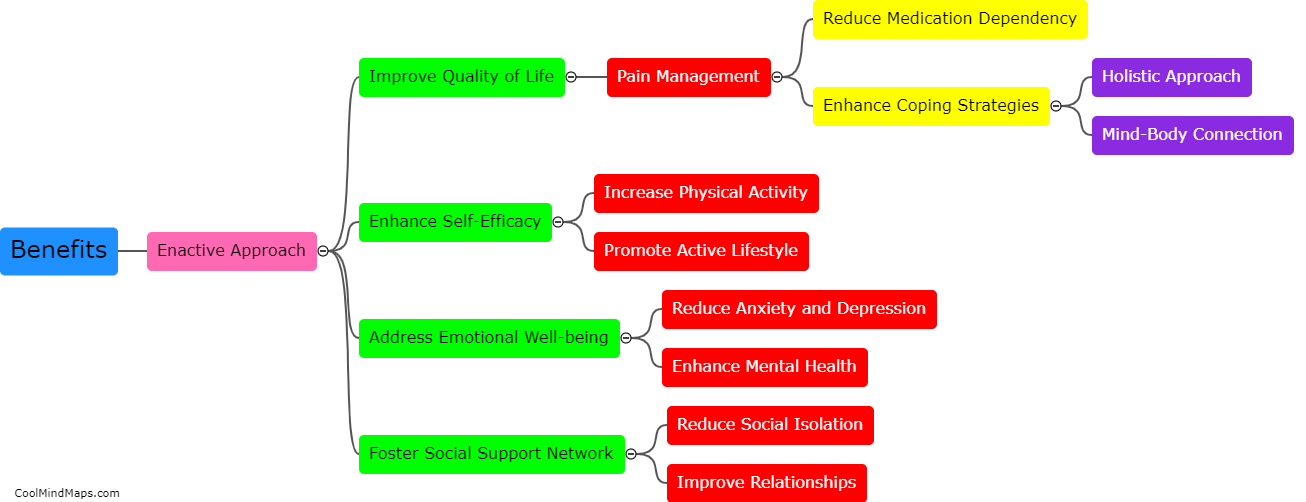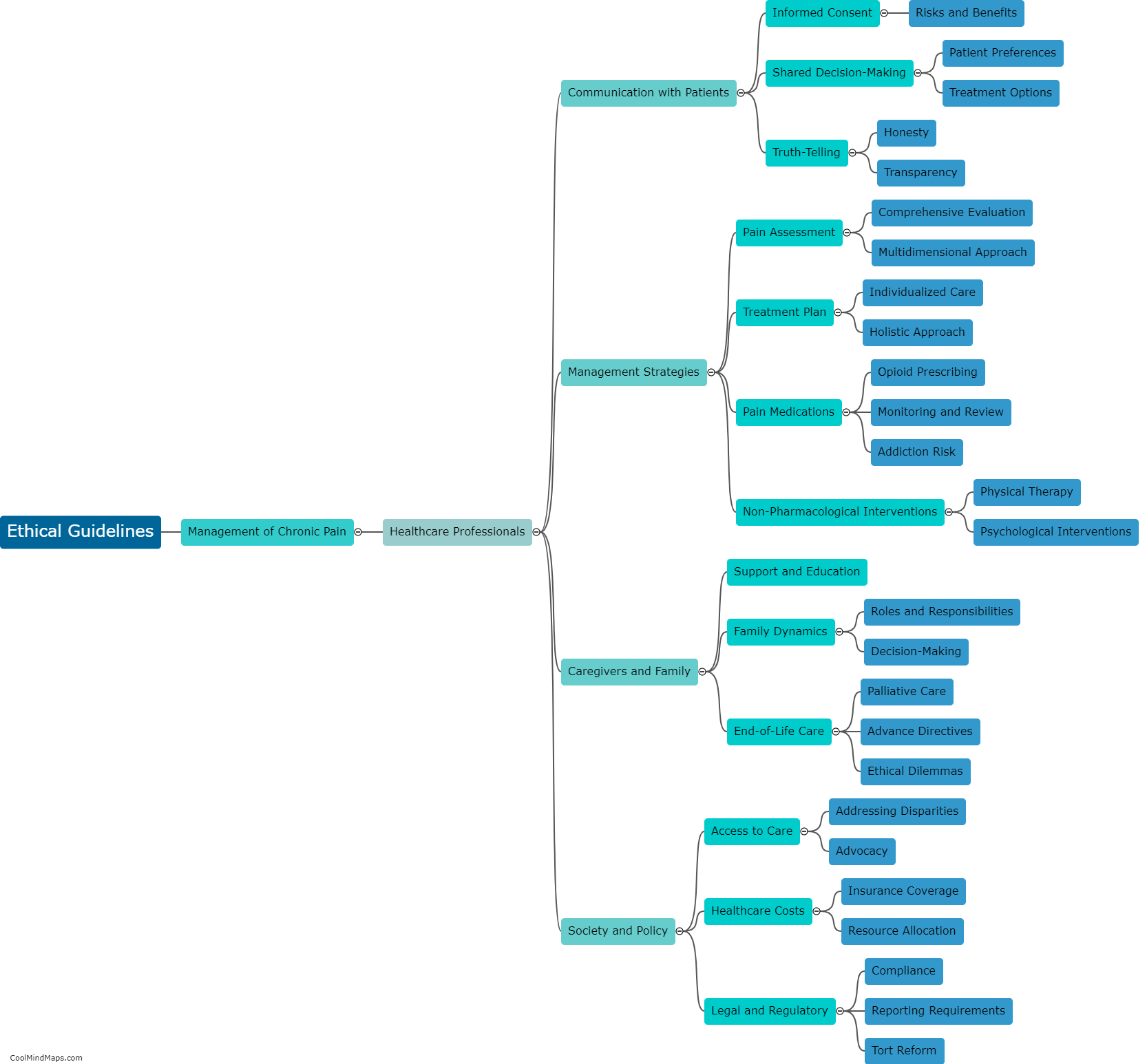How does the enactive approach view chronic pain?
The enactive approach to chronic pain views it as a complex interactive process that arises from the dynamic relationship between an individual and their environment. According to this perspective, pain is not solely a result of physiological factors, but rather emerges through the ongoing interactions between the individual's bodily sensations, thoughts, emotions, and the context in which they live. The enactive approach emphasizes the need to understand chronic pain as a lived experience, taking into account an individual's personal history, social interactions, and cultural context. By focusing on the embodied and situated nature of pain, the enactive approach highlights the importance of considering the whole person and their environmental interactions when understanding and addressing chronic pain.

This mind map was published on 2 December 2023 and has been viewed 104 times.











